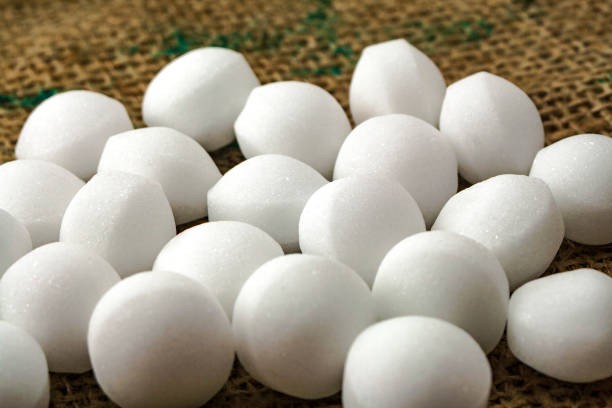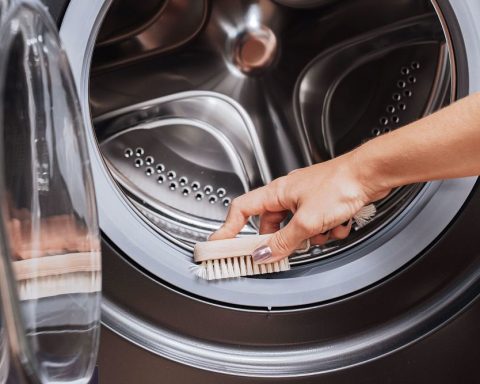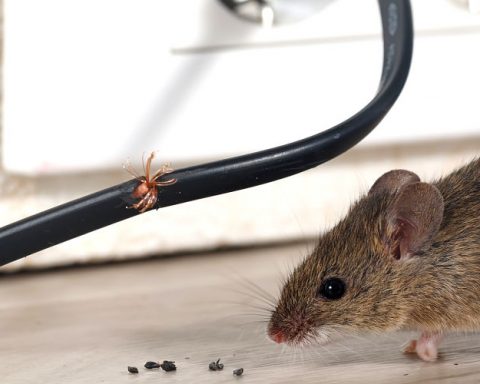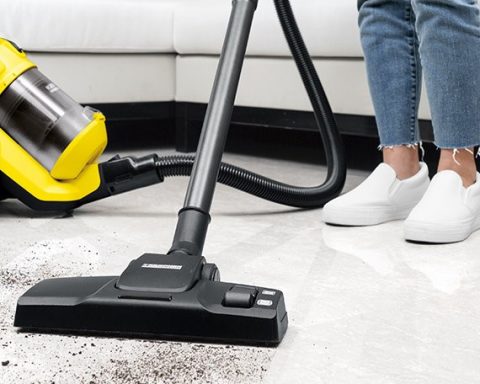Possibly you are reading this because you have seen the presence of small moths in your kitchen or pantry over time and you are also wondering how to get rid of pantry moths. Pantry moths exist for the purpose of breeding and reproducing. This is the exact reason why they infest the kitchen and lay their eggs in the food so that their larva can have something to eat when they hatch. You always have to understand the source of a problem to be able to solve the problem and to avoid recurrence.
Where can you find Pantry Moths?
Pantry moths are common in a lot of households and this read will help you understand them and how to get rid of them. As the name would depict, pantry moths are not after your fabrics or closet but after your food in the pantry or kitchen area. One can easily mistake them for clothes moths. They can be easy to get rid of with the right kind of trap. Read on to find out how to get rid of pantry moths.
What is a pantry moth and are they harmful?
Pantry moths are small, gray, tan, or brown flying nuisances. Otherwise known as Indian meal moths. The name “Indian meal moth” came from an entomologist who observed the moth larvae infesting cornmeal, and it was commonly called “Indian meal” in the 1800s. Fully grown larvae are half an inch and have brown heads and are dirty white in color. Sometimes they are tinted with green, yellow, or pink. They are extremely active.
Pantry moths do not spread any disease, pathogens, or parasites but they contaminate food in the kitchen and can be relatively expensive to replace.
How to get rid of pantry moths
a. How to get rid of pantry moths using Pantry Moth Traps
Pantry moth traps work if you place them constantly in the right positions where the pantry moths lay their eggs. By limiting the moths from laying eggs, the traps assist to break the life cycle of the moths and therefore reduce their population. If used continuously over a long period of time, it results in getting rid of their existence.
Pantry moth traps are designed to be safe to use around the kitchen or pantry area where food is stored. However, you have to follow the trap instructions for it to work. Pantry moth traps are not for clothing moths or gypsy moths because they are ineffective. This simple-to-use trap is non-toxic and, is designed to sit neatly on pantry shelves and provide long-lasting protection. Pheromones lure moths to the sticky trap, where they stick and die.
To use the trap to get rid of the pantry moths, open the packet, peel it, and fold it. Apply the trap by lightly pressing it into the center. Place the trap in areas where you mostly see the moths swarming. These traps are made use of during, and prior to an infestation to monitor potential moth problems early on. Unlike mothballs, the traps don’t leave a smell – here is how to get rid of mothball smells.
Pros of Pantry Moth traps
- The Pheromone lure in the pantry moth traps attracts moths to the sticky trap where it gets sticks and dies
- They come ready-to-use and easy to assemble
- They protect your family’s healthy with them being non-toxic sticky traps
- The folded design of the pantry moth traps prevents children or pets from touching the sticky surface
- Assist you to save money by protecting your food from the moths.
- Pantry moths do not leave a smell the way mothballs do.
b. The use of Moth repellents
Are you wondering how to get rid of pantry moths using repellents? There are a variety of repellents in the market. Some are natural and some are not. The known pantry moth repellants in the market are Bay leaves, lavender, cedar, and mint. Ensure you fill sachets with any one of these, and proceed to tuck them inside your pantry as a repellent. Replace them every now and then, so they remain effective for getting rid of the pantry moths.
i. Cedar as pantry moth repellents
Cedar contains natural oils and a strong odor that act as a repellent to pantry moths. Cedarwood is considered to be a natural insect repellant, owing to it to the pungent scent it gives off. However, in order to get rid of the pantry moths or keep them in check, you need to replace cedar chips, strips, balls, or sprays every six months. Alternatively, buy wood hangers that are made of cedar that protects your kitchen cabinets or pantry.
Pros of Cedar
A benefit of using cedar as a repellent is that it can be used in both the kitchen and the closet to get rid of any odor. Unlike moth balls which are chemicals, cedar is a natural and safe method to get rid of pantry moths for your home. Its scent and properties come from its natural aromatic oils, so you can be sure that you get effective protection without harmful side effects and by-products. Furthermore, it does not leave a mothball odor.
ii. Bay leaves as natural repellents
Due to bay leaves strong smell, bay leaves are effective in discouraging pantry moths. Just scatter a few leaves around your pantry or kitchen cabinets that will help keep the pantry moths at bay. Put a few dried or fresh bay leaves in deliberate places in the pantry that is likely to be infested. Furthermore, you can hang a bouquet of the bay in the pantry and the odor will spread around.
c. Storage of food in tight containers
How do you get rid of pantry moths by the use of storage containers? By storing your pantry staples in airtight, clean containers. Ensure you make use of plastic storage such as plastic containers with strong seals, or glass jars to seal your dried items. Once you have purchased products, store them in the freezer for a couple of days then open the packets and store in the airtight containers. Put ingredients of any open packets in the storage containers or jars. There shouldn’t be half-closed bags of flour or reluctantly tied pasta bags. Clean all the containers that had the infested produce. Additionally, these storage containers have a slim design and take up less space. They easily fit into your cabinets, shelves, or freezer which helps you to have an organized kitchen and also frees up space in the pantry.
d. Freeze the food you’re keeping
Anything that’s moth-free can stay, but before you put it back in the pantry, put it in the freezer overnight to kill any moth eggs that may be present. This is a good practice for any dry good you bring home, actually, a quick stay in the freezer will destroy the eggs on arrival. If you have found yourself, victim, to pantry moths, dispose of all the affected food, and wipe out all the shelves, making sure to clean any holes in the shelving.
Freezing dry items will kill pantry moths and also any other insects or pets that might be hidden in your new purchases. To do this effectively, wrap these items in a plastic bag and freeze them for approximately 3 days before storing them.
If you feel concerned about a purchase that has just come in from the supermarket or anything that you have in the pantry, store it in the fridge for a couple of weeks to kill the eggs and larvae of the pantry moths.
e. Use Essential oils for pantry moths
You will need a spray bottle, white vinegar, and water. Some oils you will need are, eucalyptus, peppermint, and cedarwood essential oils.
How to get rid of pantry moths using these ingredients you would wonder. You should mix equal parts of vinegar and water in your spray bottle. Add 10 of cedarwood essential oil,15 drops of eucalyptus, and 5 drops of peppermint. Basically, spray the solution on surfaces and wipe down with a cloth.
f. Clean your pantry thoroughly
The simplest yet tedious way on how to get rid of pantry moths is a thorough cleaning. Start by replacing or washing all the shelf liners. Vacuum the shelves and pay attention especially to the shelf brackets, corners, undersides, and mounting hardware. Vacuum the doors, walls, floors, baseboards, trim, ceiling, and doors. Remember to also clean inside edge, hinges, and knobs. Then, wipe down your pantry shelves with hot, soapy water and mop the floor. When done with the cleaning up, take out the vacuum bag to your outside trash bin and be sure to wash out the dust compartment. You don’t want to harbor moth larvae in your vacuum.
What causes pantry moths?
Pantry moths are hard to spot and are sometimes considered secretive since you don’t normally see them flying around. Housekeeping is not the cause of pantry moths. They infest places that have an abundant food supply. Most of the time they get into the house because they are already in dry food packaging or have built cocoons on jars or tins.
What food items attract pantry moths?
Pantry moth larva can easily chew through food packaging. You may find clumps of flour or cereals. Pantry moths are attracted to grain foods such as flour, cereal, spices, nuts, dried fruit, grains, breadcrumbs, and pasta. This is exactly why these pests flock the kitchen or pantry.
Signs of Moth Infestation
- Presence of moths flying around the pantry or kitchen in a zigzag pattern. They are small half-inch long brownish moths. Pantry moths mostly fly during night time and are most of the time lights attract them.
- Clumps of infested foods. This is the biggest indicator of pantry moth infestation. These clumps in the infested food are formed by larva groups that web together with threads of silk.
- Cocoons: You may also see web-like cocoons on top of kitchen cabinets and in the pantry corners.
- The larva, which is white wormlike pests with brown heads suspend from the ceiling. Larva frequently crawls up the walls and suspend themselves from a silken thread. The larvae are so small and it would be difficult to see them from the ground. Although, you can use a magnifying glass to be able to see them.
- Pantry moths also leave an unpleasant odor due to the secretions that they emit.
Tips for avoiding future pantry moth’s infestation
It is always important to keep in mind that it is easier to avoid moth infestation than clean up after the infestation. The tips to avoiding infestation include;
- Organize your pantry
You should get rid of any packaged food item that is past the expiration date.
- Store your products smartly
Ensure you buy only in small quantities of grain products, and store them in airtight, firm, bug-proof containers. This makes the occasional infestation easy to clean up and prevents pantry disaster.
- Purchase Smartly
You should try and purchase only the quantities of grain products that you think you can consume in a few weeks.
- Store grains in the freezer
When you purchase rice, flour, or other grains that might be in the pantry for a while, store them in the freezer. A period of a week or so is enough to destroy off any eggs. This helps to avoid the pantry moth’s infestation.
- Clean up any food messes in your pantry as soon as they happen, paying close attention to the cracks and gaps. Additionally, scrub your pantry several times a year. It will help to avoid pantry moth infestations and alert you if there are potential problems.
- Clean Jars and Cans often
Wash any jars and cans before you use and after the product in storage ends. This habit will also help to wash away pantry moth eggs.
- Refrigerate Food
If you have space, keep all seldom-used grain products in the fridge or freezer until needed.
- If you keep a grocery stock, inspect it habitually for any pantry moth activity and also follow the same food storage practices that you follow in your kitchen.








